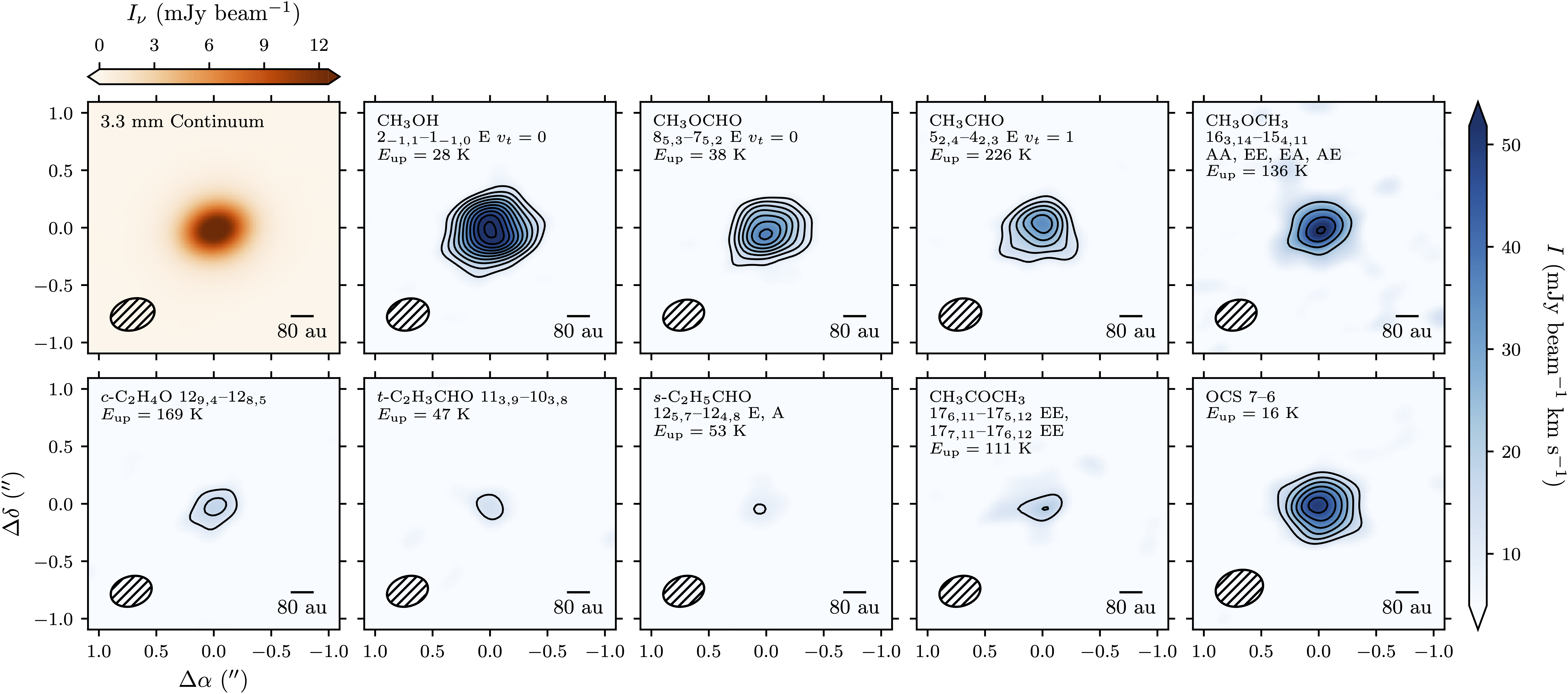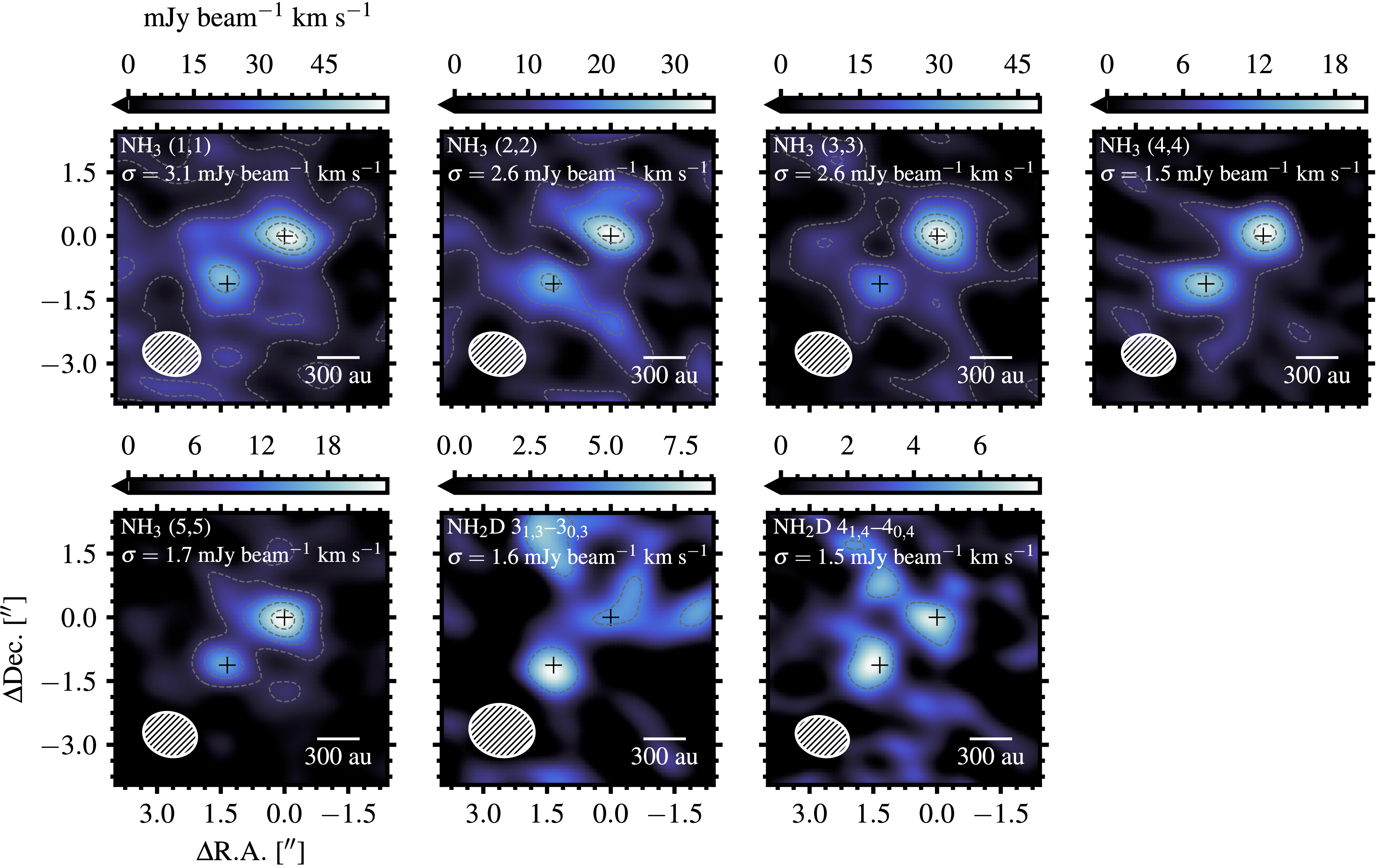Research
Chemistry of Sublimated Ice in Protoplanetary Disks
Molecular line observations have revealed the wealth of chemistry in the cold disk gas, while the ice chemistry remains elusive. To study the chemical composition and evolution of ice in disks, we focused on the disk around stars undergoing temporal accretion bursts, where the ices have sublimated off the dust grains due to the elevated temperature. With ALMA Band 3 observations, we detected various complex organic molecules (COMs) in the disk around the Class I outbursting protostar V883 Ori (Yamato et al. 2024a). We discovered that the abundance ratio of COMs to methanol (CH3OH) is higher than in the protostellar stage and that COMs are enriched in 13C (12C/13C ∼ 23) compared to the canonical ratio in the local interstellar medium (∼ 69). This study demonstrates that chemical evolution in disks may play a pivotal role in determining the composition of gas and ice available for forming planets. Highlighted in the NRAO eNews with the ties to ngVLA.

Distribution of the COM Emission in the V883 Ori disk as observed with ALMA (Yamato et al. 2024a)
We also successfully detected a COM, dimethyl ether (CH3OCH3) in a "normal" disk not undergoing accretion bursts but around slightly massive stars (a few $M_\odot$; Herbig Ae/Be stars). The abundance of CH3OCH3 relative to CH3 is significantly higher than the protostellar values, again indicating the additional formation of COMs during disk phase. However, there are significant scatter in the observationally constrained abundance of COMs among several disks. We will observe more disks to obtain statistics and uncover underlying formation and destruction pathways.

CH3OCH3 (and CH3OCHO) emission in the disk around the Herbig Ae star MWC 480 (Yamato et al. 2024b)
VLA Observations of Ammonia Emission Lines
VLA is a unique facility that can observe a set of NH3 transitions at 23 GHz at high spatial resolution, while avoiding the optically thick dust thermal emission that obscure line emission at (sub-)mm wavelengths. We observed a suite of NH3 and NH2 lines with VLA in the warm inner envelope of protostars where ices have sublimated (Yamato et al. 2022). We found a high NH2D/NH3 ratio of ~0.1—1, which suggests that at least part of NH3 ices are formed in the cold prestellar stage and delivered to the protostellar stage. This is also consistent with the prediction of chemical models that the surface layer of the ice mantle could include D-rich NH3 ice. Isotopic ratios of NH3 provide a fruitful insight into the nitrogen chemistry during star and planet formation.

NH3 and NH2D emission in the protobinary system NGC1333 IRAS4A (Yamato et al. 2022)
